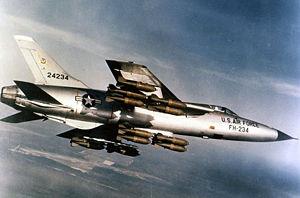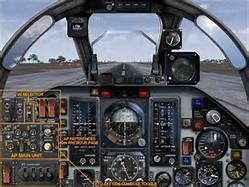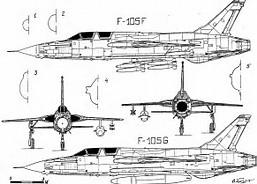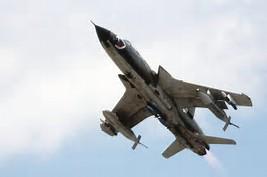S'sonic
Stealth
Menu
A free template by Lucknowwebs.com for WYSIWYG WebBuilder 8
Powered by Sispro1-S
Nigel G Wilcox
Paragon Of Space Publication
© Copyright Reserved - United Kingdom
Ideal Screen Composition 1024 x 768
SITEMAP
PSEUDO SCIENCE
SCIENCE RESEARCH
ABOUT
Desk
Supersonic
Stealth
Study
Menu
MAIN INDEX
Fastest Air Planes
Space
Transport
Menu
F-105 Thunderchief
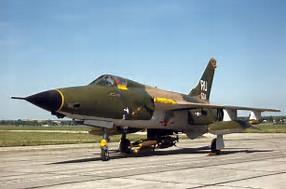
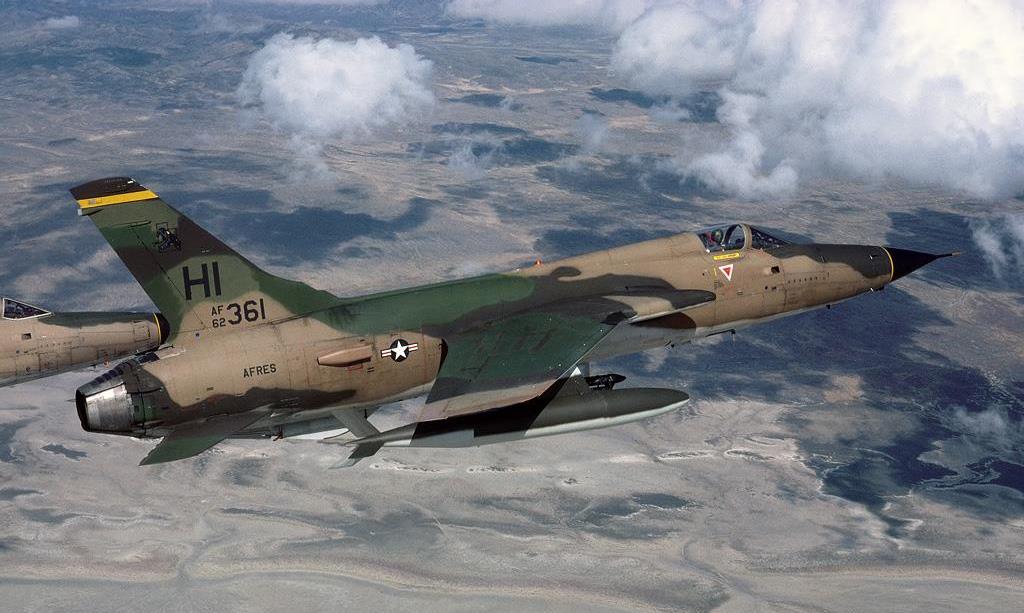
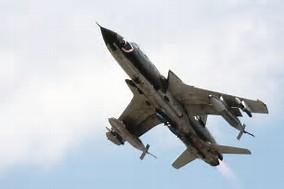
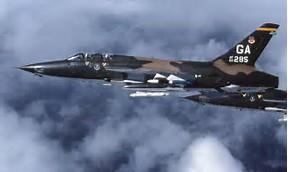
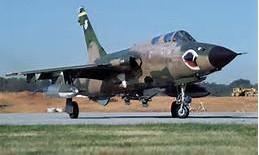
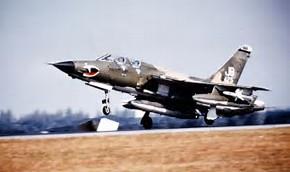
Design & Development
Design of the F-105 Thunderchief began in the early 1950s as an internal project at Republic Aviation. Intended to be a replacement for the F-84F Thunderstreak, the F-105 was created as a supersonic, low-altitude penetrator capable of delivering a nuclear weapon to a target deep within the Soviet Union. Led by Alexander Kartveli, the design team produced an aircraft centered on a large engine and able to achieve high speeds. As the F-105 was meant to be a penetrator, maneuverability was sacrificed for speed and low-altitude performance.
Intrigued by Republic's design, the US Air Force placed an initial order for 199 F-105s in September 1952, but with the Korean War winding down reduced it to 37 fighter-bombers and 9 tactical reconnaissance aircraft six months later.
As development progressed, it was found that the design had grown too large to be powered by the Allison J71 turbojet intended for the aircraft. As a result, they elected to utilize the Pratt & Whitney J75. While the preferred power plant for the new design, the J75 was not immediately available and as a result on October 22, 1955, the first YF-105A prototype flew powered by a Pratt & Whitney J57-P-25 engine.
Though equipped with the less powerful J57, the YF-105A achieved a top speed of Mach 1.2 on its first flight. Further test flights with the YF-105A soon revealed that the aircraft was under-powered and suffered from problems with transonic drag. To counter these issues, Republic was finally able to obtain the more powerful Pratt & Whitney J75 and altered the arrangement of the air intakes which were located at the wing roots. Additionally, it worked to redesign the aircraft fuselage which initially employed a slab-sided look. Drawing on experiences from other aircraft producers, Republic employed the Whitcomb area rule by smoothing the fuselage and slightly pinching it in the center.
The redesigned aircraft, dubbed the F-105B, proved able to achieve speeds of Mach 2.15. Also included were improvements to its electronics including the MA-8 fire control system, a K19 gun sight, and an AN/APG-31 ranging radar. These enhancements were required to allow the aircraft to conduct its intended nuclear strike mission. With the alterations complete, the YF-105B first took to the sky on May 26, 1956. The following month a trainer variant (F-105C) of the aircraft was created while the reconnaissance version (RF-105) was cancelled in July.
The largest single-engine fighter built for the US Air Force, the production model of F-105B possessed an internal bomb bay and five external weapons pylons. To continue a company tradition of employing "Thunder" in its aircraft names, which dated back to World War II's P-47 Thunderbolt, Republic requested that the new aircraft be designated "Thunderchief".
Early Alterations
On May 27, 1958, the F-105B entered service with the 335th Tactical Fighter Squadron. As with many new aircraft, the Thunderchief was initially plagued by problems with its avionics systems. After these were dealt with as part of Project Optimize, the F-105B became a reliable aircraft. In 1960, the F-105D was introduced and the B model transitioned to the Air National Guard. This was completed by 1964. The last production variant of the Thunderchief, the F-105D included a R-14A radar, an AN/APN-131 navigation system, and an AN/ASG-19 Thunderstick fire-control system which gave the aircraft all-weather capability and the ability to deliver the B43 nuclear bomb.
Efforts were also made to restart the RF-105 reconnaissance program based on the F-105D design. The US Air Force planned to purchase 1,500 F-105Ds, however this order was reduced to 833 by Secretary of Defense Robert McNamara.
Deployed to Cold War bases in Western Europe and Japan, F-105D squadrons trained for their intended deep penetration role. As with its predecessor, the F-105D suffered from early technological issues. These issues may have help earn the aircraft the nickname "Thud" from the sound the F-105D made when it hit the ground though the true origins of the term are unclear. As a result of these problems, the entire F-105D fleet was grounded in December 1961, and again in June 1962, while the issues were dealt with at the factory. In 1964, the issues in existing F-105Ds were resolved as part of Project Look Alike though some engine and fuel system problems persisted for another three years.
Vietnam War
Through the early- and mid-1960s, the Thunderchief began to be developed as a conventional strike bomber rather than a nuclear delivery system. This was further emphasized during the Look Alike upgrades which saw the F-105D receive additional ordnance hardpoints. It was in this role that it was sent to Southeast Asia during the escalation of the Vietnam War. With its high-speed and superior low-altitude performance, the F-105D was ideal for hitting targets in North Vietnam and far superior to the F-100 Super Sabre then in use. First deployed to bases in Thailand, F-105Ds began flying strike missions as early as late 1964. With the commencement of Operation Rolling Thunder in March 1965, F-105D squadrons began bearing the brunt of the air war over North Vietnam.
A typical F-105D mission to North Vietnam included mid-air refueling and a high-speed, low altitude entry and exit from the target area. Though an extremely durable aircraft, F-105D pilots usually only had a 75% chance of completing a 100-mission tour due to the danger involved in their missions. By 1969, the US Air Force began withdrawing the F-105D from strike missions replacing it with F-4 Phantom IIs.
While the Thunderchief ceased to fulfill a strike role in Southeast Asia, it continued to serve as a "wild weasel." Developed in 1965, the first F-105F "Wild Weasel" variant flew in January 1966.
Possessing a second seat for an electronic warfare officer, the F-105F was intended for a suppression of enemy air defenses (SEAD) mission. Nicknamed "Wild Weasels," these aircraft served to identify and destroy North Vietnamese surface-to-air missile sites. A dangerous mission, the F-105 proved highly capable at it as its heavy payload and expanded SEAD electronics allowed the aircraft to deliver devastating blows to enemy targets. In late 1967, an enhanced "wild weasel" variant, the F-105G entered service.
Due to the nature of the "wild weasel" role, F-105Fs and F-105Gs were typically the first to arrive over a target and the last to leave. While the F-105D had been completely removed from strike duties by 1970, the "wild weasel" aircraft flew until the war's end. In the course of the conflict 382 F-105s were lost to all causes, representing 46% of the US Air Force's Thunderchief fleet. Due to these losses, the F-105 was ruled to no longer be combat effective as a frontline aircraft. Sent to the reserves, the Thunderchief remained in service until officially being retired on February 25, 1984.
The Republic F-105 Thunderchief was a supersonic fighter-bomber used by the United States Air Force. The Mach 2 capable F-105 conducted the majority of strike bombing missions during the early years of the Vietnam War; it was the only U.S. aircraft to have been removed from combat due to high loss rates. Originally designed as a single-seat, nuclear-attack aircraft, a two-seat Wild Weasel version was later developed for the specialized Suppression of Enemy Air Defenses role against surface-to-air missile sites. The F-105 was commonly known as the "Thud" by its crews.
Maiden flight: 22 Oct 1955 Length: 64.40 ft Wingspan: 34.94 ft Retired: 25 Feb 1984 Passengers: 2 Manufacturer: Republic Aviation
General characteristics
Crew: 1 (2 for F-105C/E/F/G variants)
Payload: 14,000 lb (6,700 kg) of weapons
Length: 64 ft 4.75 in (19.63 m)
Wingspan: 34 ft 11.25 in (10.65 m)
Height: 19 ft 8 in (5.99 m)
Wing area: 385 ft² (35.76 m²)
Airfoil: NACA 65A005.5 root, NACA 65A003.7 tip
Empty weight: 27,500 lb (12,470 kg)
Loaded weight: 35,637 lb (16,165 kg)
Max. takeoff weight: 52,546 lb (23,834 kg)
Zero-lift drag coefficient: 0.0173
Drag area: 6.65 ft² (0.62 m²)
Aspect ratio: 3.16
Powerplant: 1 × Pratt & Whitney J75-P-19W afterburning turbojet Dry thrust: 14,300 lbf (63.6 kN)
Thrust with afterburner: 24,500 lbf (109 kN)
Performance
Maximum speed: Mach 2.08 (1,372 mph, 2,208 km/h) at 36,000 ft (11,000 m)
Combat radius: 780 mi (680 nmi, 1,250 km)
Ferry range: 2,210 mi (1,920 nmi, 3,550 km)
Service ceiling: 48,500 ft (14,800 m)
Rate of climb: 38,500 ft/min (195 m/s)
Wing loading: 93 lb/ft² (452 kg/m²)
Thrust/weight: 0.74
Lift-to-drag ratio: 10.4
Time to altitude: 1.7 min to 35,000 ft (11,000 m)
Armament
Guns: 1× 20 mm (0.787 in) M61A1 Vulcan 6-barreled Gatling cannon, 1,028 rounds
Hardpoints: 5 total: 4× under-wing, 1× centerline pylon stations plus an internal bomb bay with a capacity of Up to 14,000 lb (6,400 kg) of ordnance, including conventional and nuclear bombs, and AIM-9 Sidewinder and AGM-12 Bullpup missiles.
Avionics
NASARR R-14A radar
AN/ASG-19 Thunderstick fire control system
AN/ARN-85 LORAN (AN/ARN-92 in Thunderstick II-modified aircraft)
Role: Fighter-bomber
National origin: United States
Manufacturer: Republic Aviation
First flight: 22 October 1955
Introduction: 27 May 1958
Retired: 25 February 1984
Primary user: United States Air Force
Produced: 1955-1964
Number built: 833
Unit cost: US$2.14 million (F-105D, in 1960 dollars)









